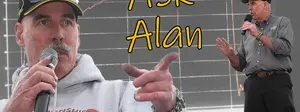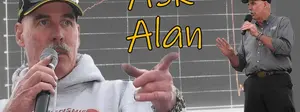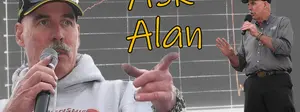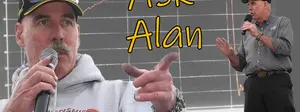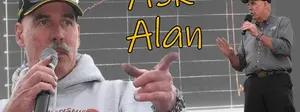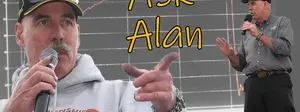

Tire and clutch life, double-wall headers, body templates, dead heats, and more
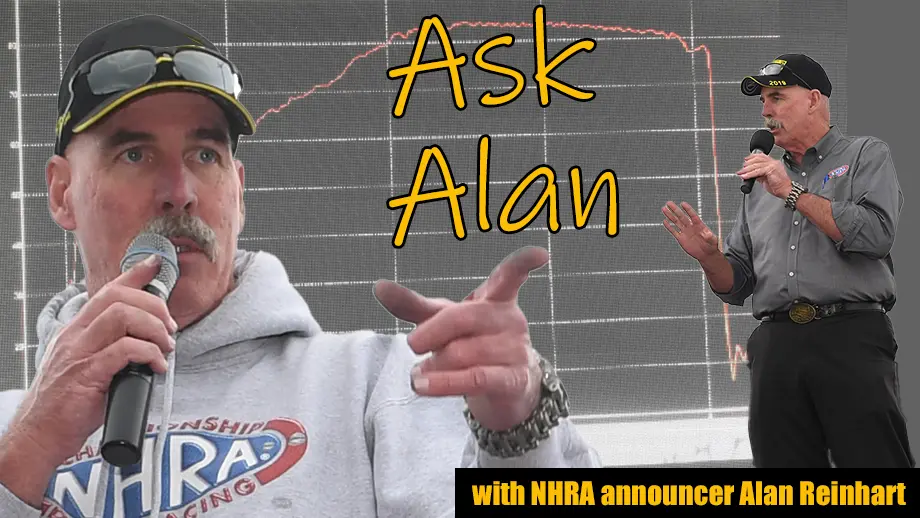
At every NHRA national event, NHRA announcer Alan Reinhart offers fans the chance to send him an email with technical questions about the race cars, the tracks, and the procedures. As part of a semi-regular feature, we’ll share those questions and answers on NHRA.com.
Fans can write to Reinhart at announcer@nhra.com.
Here we go!

What grade aluminum are the Top Fuel/Funny Car engine blocks. 60-70 series? Something else? — David Enders
By rule, nitro blocks are forged; the heads are 6061 billet.

It seems like the headers are two-piece now? I assume it’s in case they scrub the wall. It looks like the last foot or so can get hit and bend so not to hurt where it bolts to the heads. — Byron Bourget

They are double insulated under the body. The outer sleeve doesn't get nearly as hot as the single pipe, so a small oil leak, for example, would be less likely to cause a fire.

How many runs do a set of slicks last, and what do they cost? — Phillip Bess
They cost about $800 and last between four and eight runs.
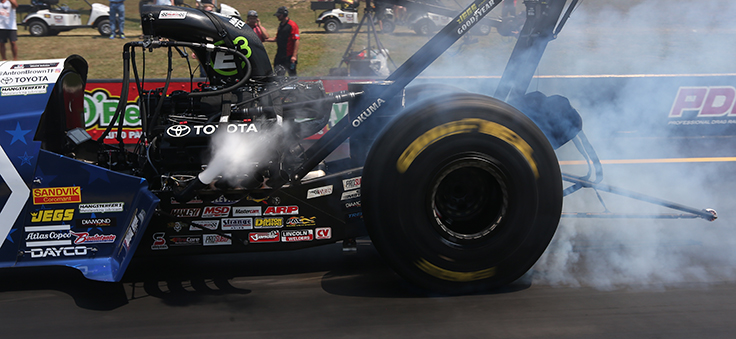
Fun Fact: Used tires are preferred for most conditions. A bigger team will buy new tires and give them to a smaller team to make a run or two and break them in, then get them back.

On a solo run, if the driver trips a red-light, is he/she disqualified? Also wondering if the single driver crossed the centerline — are they disqualified as well? — Steve Edgell
No, is the short answer. You cannot lose to a "Ghost," so, on a single, the rule states that, "The car must stage under its own power"; once you do that, you will advance. If you cross the centerline or hit a block, your e.t. would be disallowed, so you would lose lane choice, and the fine and point penalty would be assessed, but you would still advance to the next round.

Has there ever been — or can there be — a dead heat in an elimination round? I'm from Kentucky and grew up around racehorses, so we have a dead heat every once in a while. — David White
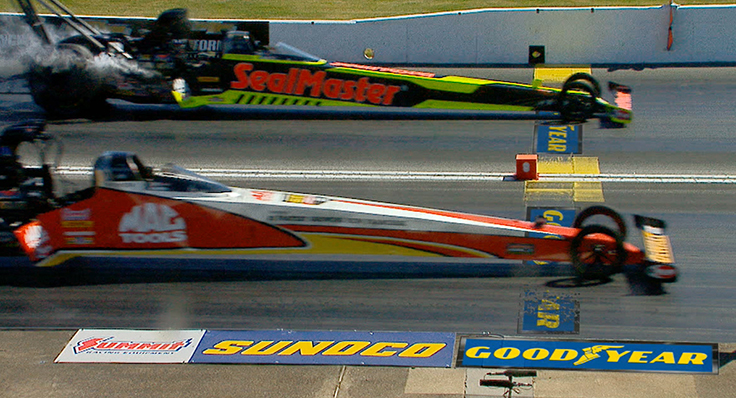
There have been races that go down to less than 0.0000 (less than 1/10,000th of a second), but the computer picks the winner. The win picker goes out seven places past the decimal, the readout only four. The Top Fuel final in Atlanta 2016 was one of those. It's rare, but it happens.

I hear the talk about clutch disk/floater issues this year. How many passes does a team get out of a clutch pack and floaters? Do discs live and die as a set or can one be swapped out? — Mike Baker

Floaters are disposable — one run and they go in the trash. A clutch pack has brand-new floaters every time. Discs can go up to four runs depending on wear, but they are cut (resurfaced) after every run to be sure they are perfectly flat.
Packs are built in advance. Most teams will have four ready for Sunday, so they swing the old one out and a new one in. Between races, they will surface, measure, and evaluate the discs for the next time. Then build the clutch packs for the next race based on disc thickness and hardness. It is very common for a clutch pack to have a mixture of new and used discs.

Are there body templates for funny cars like NASCAR? The Toyota body is very sleek and has a smaller/shorter panel behind the rear wheel than all the others. — Dennis Whitcomb
Yes, and the bodies must be submitted and approved by NHRA before they are run.

About the only thing on a Funny Car body that is left open is the height of the rear spoiler or "tailgate." The teams can raise or lower it as needed for track conditions. More downforce equals higher tailgate, but that also means more drag, so they adjust it as needed.

Could you explain why the nitro cars drop cylinders on the burnout? 1/8th of an inch throttle opening, but on the low side of the fuel system might explain why they are rich. They seem to pick the cylinders back up when the car returns to idle, or after they have backed up and the crew chiefs have adjusted the idle. — Rob Cook
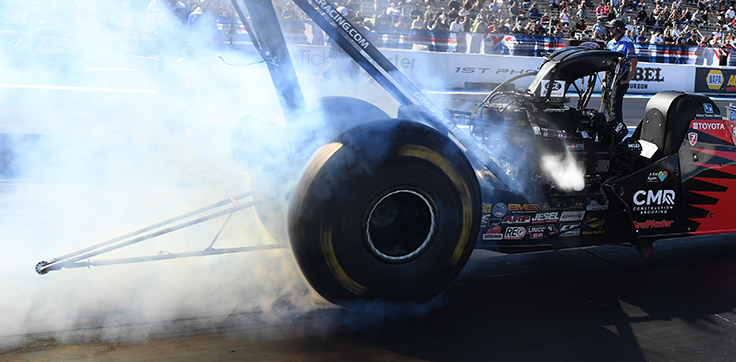
Nitro engines need to be loaded to be happy. On the burnout, there is very little load on the engine, so they drop the cylinders. When they go back to an idle, they have the correct air/fuel ratio and start firing again.
It has gotten more prevalent the last few years as crew chiefs found that during the burnout the engine could go on the lean side and do minor damage to the pistons. Then during the run that minor damage could become catastrophic. So, they richened up the air/fuel ratio on the burnout to prevent that.

I have seen this plate of gauges before and not sure what it’s for. They set it on the valley; didn’t fasten it then took it right off like it was some kind of template. Are all the gauges for checking vacuum? — Steve Warda
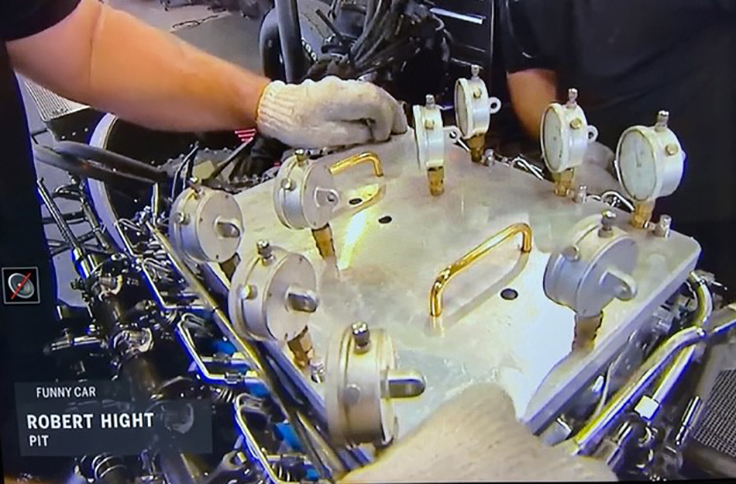
They are making sure the manifold is perfectly flat. It can distort when it's torqued down, and if it does that, it will leak boost. Those gauges are dial indicators, so if it's warped, it will be very obvious.
If you watch closely when they install the manifold, there will be one guy on each side, and they tighten to opposing bolts at the same time to help alleviate the distortion.

How does the electronic equipment disconnect the throttle? — David Ziny
Most now use an air cylinder on the throttle linkage right where the cable attaches to the blades on the injector. When activated, it pulls out a pin that disconnects it.

In the picture at left, it is engaged, the hole on the left is where the throttle cable attaches. You can see the small air fitting on the cylinder. When the system activates, it pulls the pin and disconnects the throttle lever from the throttle shaft, as you can see in the second picture.























